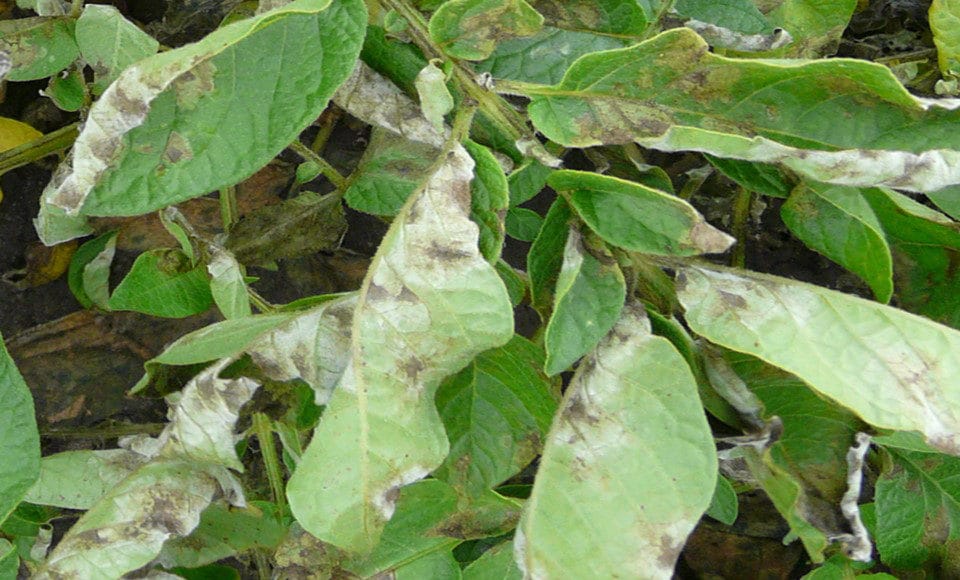The breaking news last week was the detection of late blight on August 19 in six fields located in Minidoka County in Southern Idaho. The weather there is dry; the average monthly rainfall is 0.7 inches from April to September.
Potatoes are grown under irrigation, and after irrigation the canopy does not remain wet for very long. This sort of weather is not favorable for late blight, so it came as a surprise to find six fields infected, all with US 23, the tomato strain. The Idaho Spore Trapping Network detected spores of Phytophthora infestans in the area over the last two weeks. Spores were also detected in Acequia, Idaho, on August 9 and again on August 12 and 14. Spores were detected in Rupert on August 16.
Is the late blight pathogen adapting to warmer, drier weather? Time will tell, but fungi, bacteria and insects probably have genetic “ammunition” that allows them to adapt quickly to the changing environmental conditions.
Spore traps in Ontario have detected late blight since July 16. There were spores in the traps even during the recent dry spell. This was unexpected, but PCR tests are extremely sensitive and can detect DNA when there are just a few spores on the filters. Despite this, I have seen no infected fields. I have seen good spray coverage whenever I walked fields. Ontario potato growers should be commended for keeping their fields free of late blight.
This past week, the spore traps detected low levels of spores in Norfolk and Simcoe County but no spores in Dufferin county. The spore trapping project will continue in September thanks to the sponsorship of BASF and Syngenta.











